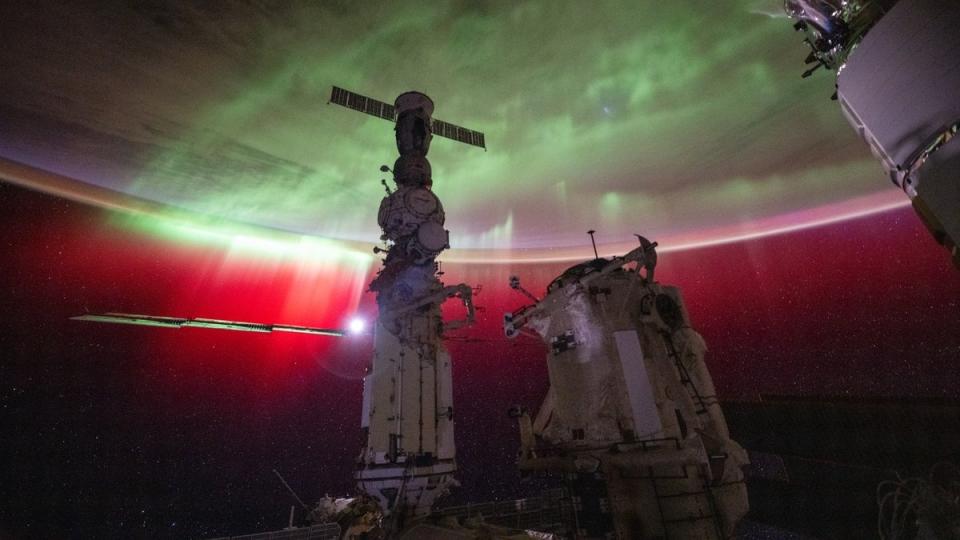When you make a purchase through links in our articles, Future and its syndication partners may receive a commission.


More than 25 years of research on the International Space Station has given investigators new ways to learn about astronaut mental health.
The International Space Station (ISS) has hosted a variety of experiments on mental health, from virtual reality to taking pictures of Earth, to help astronauts during missions that last six to 12 months. can
NASA and other space agencies want to learn how to keep astronauts happy, not only by preparing for long-duration missions to the Moon with the Artemis program, but also by reapplying “lessons learned” to isolated, confined environments here on Earth.
Here are five investigations into astronaut mental health conducted on the ISS, which NASA highlighted in a recent release.
Related: Why a VR headset on the ISS really makes a difference to astronaut practice
Circadian light


The Circadian Light Project is testing a new lighting system on the ISS, to see how the light patterns “help astronauts maintain a more normal daily or circadian rhythm,” NASA representatives wrote in a statement.
The ISS lighting panel tries to “better mimic the natural conditions on Earth”—those caused by the Sun’s passage through our sky. The goal is to see how astronaut well-being can be improved through issues such as sleep and stress reduction, which may also help with worker turnover.
Circadian rhythms


Circadian Light builds on an earlier experiment called Circadian Rhythms, which “examined how daily rhythms change during long-duration spaceflight and its non-24-hour cycles of light and dark,” the project said. The investigators wrote. Core body temperature was measured using skin sensors to assess how the astronauts performed.
NeuroMapping


The purpose of the neuromapping was to delve into the structure and function of the brain to see how issues like multitasking change in space, and how they change again when an astronaut returns to Earth.
Overall, the results were positive, as the peer-reviewed literature indicated: “The published results from this work include a study that found no effect of spaceflight on spatial working memory, but it did Another article reported significant changes in brain volume that increased with longer intervals between missions,” NASA representatives wrote. The agency also noted that a gap of at least three years between missions is beneficial.
Crew Earth Observations


While astronauts are already tasked with taking pictures of the Earth to track human-caused climate change, natural disasters and other events on our planet under a project called Crew Earth Observations, the new probe will also focus on How photography can help an astronaut’s mental health.
“Researchers have learned that taking these pictures also improves the psychological well-being of crew members. Many of them spend much of their free time shooting from the station’s cupola,” NASA representatives wrote, referring to the wrap-around window on the ISS. does Earth observations.
VR mindfulness


Related stories:
– Why a VR headset on the ISS really makes a difference to astronaut practice
– Deep space missions will test astronauts’ mental health. Can an AI companion help?
– Watch the trailer for “Space: The Longest Goodbye,” the new film that explores astronaut mental health (VIDEO)
VR Brain Care, a research project of the European Space Agency (ESA), uses virtual reality technology for astronauts to exist in different environments. The 360-degree environment includes video and audio, and is followed by questionnaires to assess how the astronauts felt while using the technology.
“In addition to helping astronauts, this device can be used on Earth to deal with psychological issues such as stress, anxiety and post-traumatic stress disorder,” NASA representatives wrote.
ESA astronaut Andreas Mogensen, one of the participants in the study, previously told Space.com how much he enjoys using VR for applications like exercise on a stationary bike. “It really makes a difference,” Mogensen said. “There’s something about when you find yourself cycling up a hill in a virtual reality headset; you just have more motivation to pedal a little harder.”
#Mental #health #space #ISS #experiences #astronauts #happy #Earth